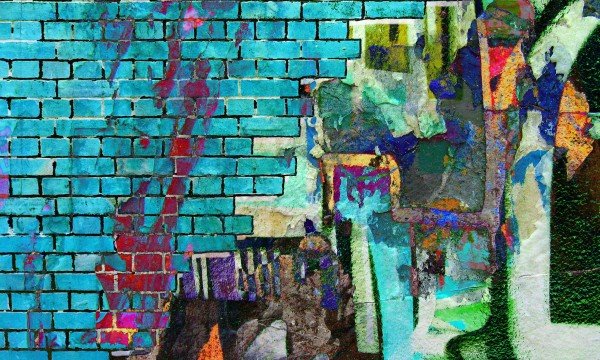The trick to removing graffiti is to do it as soon as possible. Most graffiti is done with paint, which is applied wet and solidifies as the paint solvents evaporate. The solubility of paint, therefore, is reduced the longer it has a chance to harden. If you remove the paint right away, you will have a good chance of succeeding.

1. To remove some markings
Try a simple solution of warm water and dishwashing liquid. If the paint or marker used was water-soluble and you’ve caught it early enough, this might just work.
- Carefully scrub the graffiti with a nylon- or natural-bristled brush.
- Rinse with the spray nozzle on your garden hose, if possible. The low pressure might lift the stain without damaging the surface it’s on.
2. To remove stubborn graffiti
Try a chemical paint remover. (Keep in mind, however, that if the graffiti is on a painted surface, these paint removers won’t discriminate between paints, and you may end up having to repaint your entire wall.)
- Gels and pastes typically work well because they are easy to apply and don’t drip. However, avoid aerosol graffiti removers, which can dissolve paint and then run down the wall, staining a previously clean area.
- An alkaline paste containing a caustic substance — sodium hydroxide or potassium hydroxide — works well. These are harsh chemicals, though, and you should follow the manufacturer’s safety and use recommendations carefully.
- With such a paste, you typically wipe it on, let it stand and loosen the paint for a few minutes, and then wipe it off.
- Then you rinse with water and neutralise with a separate acid-based neutralising agent (such as vinegar, or a mild acid wash). The neutralising agent keeps the caustics from staining stone and other surfaces.
3. If all else fails
Consider blasting the graffiti off. You’ve got three options — pressure washing, steam cleaning or sandblasting. All can be extremely harmful to wood, old brick and stone. And all but the finest-grade sandblasters will damage metal.
- You can rent a pressure washer at an equipment rental store. Follow all safety instructions and use extreme caution, since these machines can be dangerous and harmful to your house.
- One way to reduce your chances of damaging the surface is to begin with a low-water pressure and gradually increase it as necessary.
- If you live in an area of water restrictions or would prefer to get professional help, look in the Yellow Pages under ’Cleaning Contractors’.
- And you should definitely leave sandblasting up to the pros, so also look in the Yellow Pages under ’Sandblasting’.
4. If you can’t beat them, join them
- If it’s a painted surface, you can paint over the graffiti with a fresh coat or two of your original wall paint.
- Or, you may decide now is the time to change colour.
To remove graffiti from glass
- Use a single-edge razor blade.
- Put it in a flat scraper (available from hardware stores), hold the scraper at a 30-degree angle to the glass and patiently scrape the paint.
- Avoid paint strippers. They aren’t as effective on glass, as they tend to smear the paint and make it harder to remove the vestiges.
- Also, once you apply paint stripper, the razor blade is not as effective, because the paint is now thinner.
